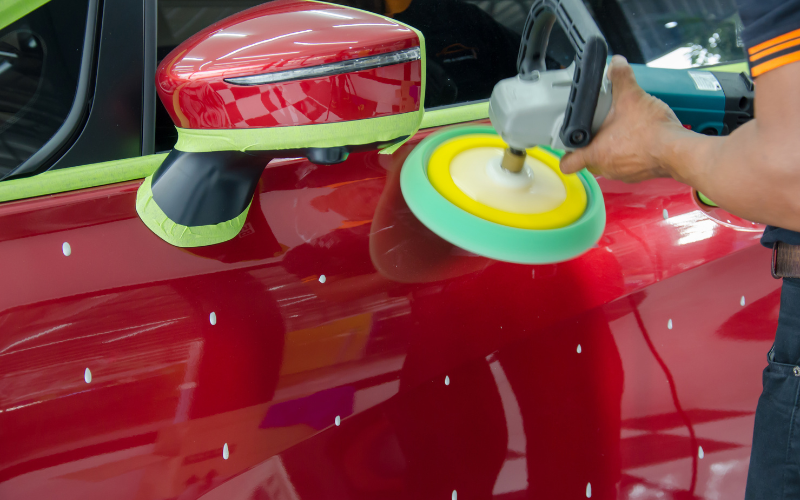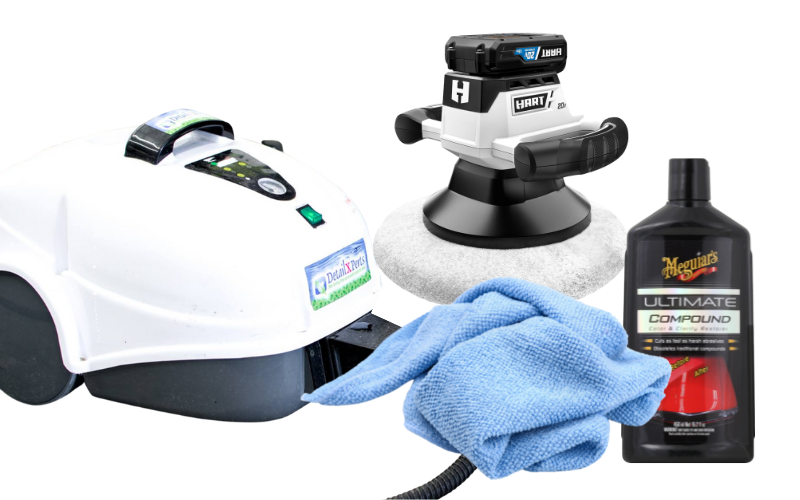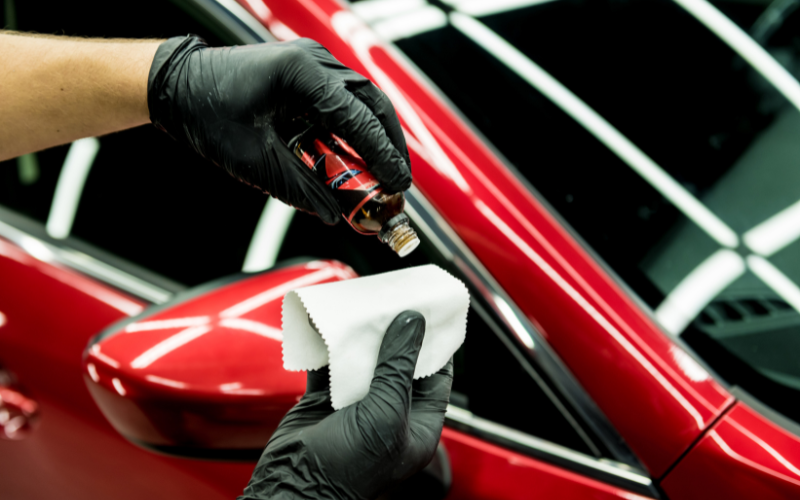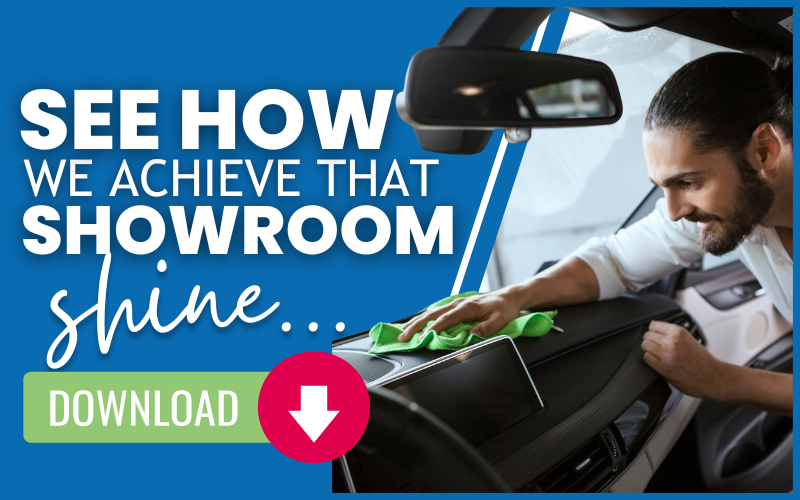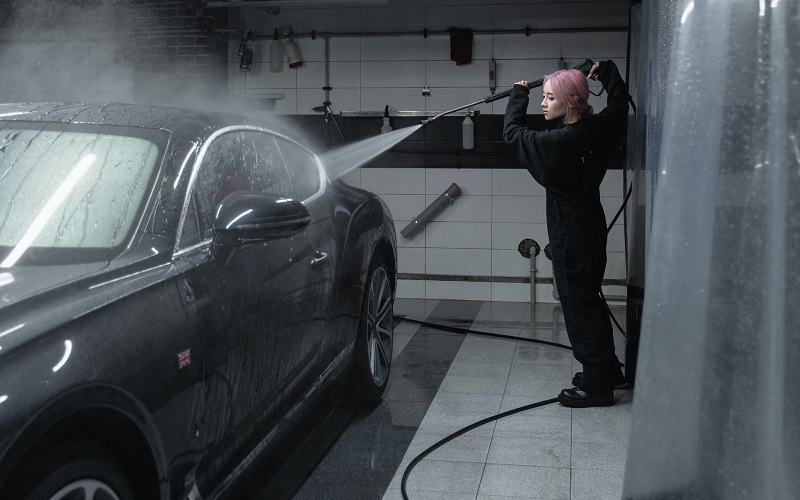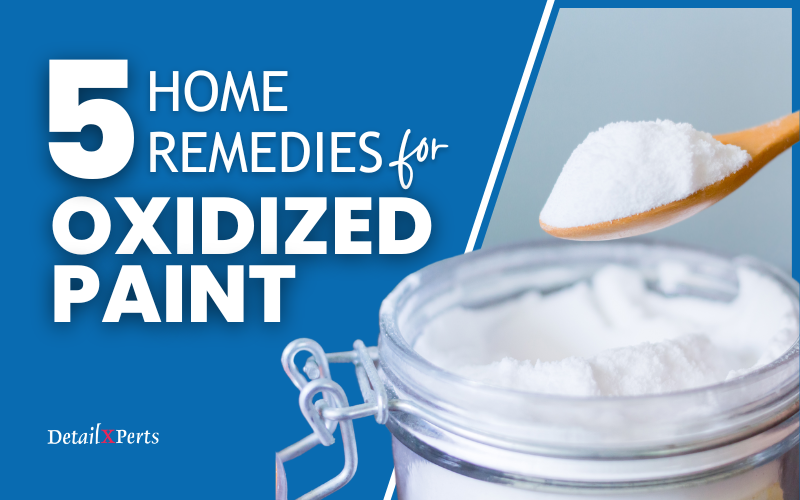Learning how to remove oxidation from car paint is straightforward. However, the process takes time and an eye for detail. You will also need a good selection of tools and materials to complete the job successfully. But if you are confident in your DIY auto detailing skills, our guide outlines the necessary steps.
If you start to remove oxidation from car paint and discover it is a bigger job than you initially thought, don’t panic. We are here to help. And our trained teams at DetailXPerts will use proven green tech and eco-friendly methods to make your car paintwork shine again. Furthermore, our regular steam cleaning methods and waxing are great preventative measures to ward off signs of oxidation. CLICK HERE to download our Eco Car Wash Benefit Guide.
How to Remove Oxidation from Car Paint in 6 Steps
What causes paint oxidation on your car? Oxidation happens when your car paint clear coat begins to fade and peel due to dirt build up or exposure to the elements over time. For example, the sun’s intense UV rays can cause oxidation. Fortunately, once you know how to remove oxidation from car paint, you can restore the shine to your car exterior. Here are the 6 steps:
-
Park Your Car in a Shady Area
If you do not have enough garage space, pick a shady spot when you want to remove oxidation from car paint. First, working outdoors in the shade is more comfortable than in direct sunlight. Second, you do not want car care products drying too quickly on the car’s hot surface while you work.
-
Wash and Dry Your Car
A clean car makes it much easier to see signs of oxidation damage. Therefore, wash and dry your vehicle to remove surface dirt, mud, and other contaminants. This important pre-treatment stage also ensures you do not trap dirt or sand in the buffer heads, which could lead to more car paint damage.
If you want to save time, going along to a local car wash might seem like a good idea. However, some automatic car washes can cause paint swirls and scratches. Instead, our mobile car cleaning service is a safe and convenient option. We use steam cleaning technology that is tough on dirt but gentle on paintwork.
-
Tape Around the Oxidized Area
Once you have identified the signs of oxidation, isolate the affected areas with detailing tape. This durable tape is easy to apply and provides extra protection for the surrounding paintwork when using the buffer tool. After you have completed your work, you can easily remove the detailing tape without leaving a residue or damaging the paintwork underneath.
Note, at this stage, you might discover you do not need a buffer machine. If this is the case, home remedies for oxidized paint can help remove light oxidation.
-
Gather Your Materials
Now that you know which areas you’ll be working on, the following tools and materials will help you with this next step: how to remove oxidation from car paint.
- Towels. Buffing a car is a messy job. In most detail shops, technicians change or clean buffer heads often. However, if you don’t have multiple buffer heads, simply use a clean, damp towel to remove dust generated by the buffer.
- Compound. Think of a compound as a liquid sandpaper. Compounding a car removes scratches and other paint imperfections like oxidation. Use the least aggressive compound on a small part of the affected area. If it works, fine. If it doesn’t, then use a more aggressive compound with caution.
- Buffer machine. There are generally two types of buffer machines – rotary and dual-action. If you are a beginner, use the dual-action buffer. If you are more experienced, use the rotary type, which will help you do the job faster.
- Wool pad. A wool pad is designed to remove car paint damage, such as oxidation, scratches, and similar paint imperfections. It cuts through paint, so we recommend caution when using it. There are three main types of wool pads for car detailing: light, medium, and heavy.
- Car polish. It removes any marks or imperfections left behind by compounding.
- Polishing pad. A polishing pad helps speed up the polishing process.
- Foam applicators. This car accessory helps you apply the wax evenly and effectively to ensure a professional finish.
- Wax. Enhance the shine of your paintwork and protect the clear coat with a car wax. For example, Meguiar’s range of wax and protect products return impressive results.
Note, if you see extreme oxidation (as in very chalky spots), you will need to wet sand the area. See our guide, How to sand a car.
-
How to Remove Oxidation from Car Paint: Using the Buffer
You can remove oxidation by hand. However, this takes time and elbow grease! For heavier oxidation, an electrical buffer and polishing compounds will effortlessly remove the damaged paint. This is what to do next:
- Get your buffer. Attach the wool pad. Moisten it with water, then put some compound on the pad. Moistening the pad will make the buffer head glide on the paint, thus preventing scratches.
- Set your buffer to the desired speed. Ideally, a good speed is 1 to 3. Of course, this depends on the severity of the oxidation and your experience using a buffer.
- When buffing, work on a small area at a time to prevent the compound from drying up. Wipe off the buffed area with a wet towel.
Below is what your car’s paint would look like after you have removed the oxidation. Notice the fading on your car’s paint? Don’t worry. It’s normal. The next step will remove the fading.
-
Waxing
Waxing is the final step after removing car paint oxidation. There are different types and brands of waxes available. Ideally, go for a high-quality wax. It might cost you a bit more, but you will benefit from longer-lasting results.
How to wax a car? First, gather the equipment and materials that you need. Second, put some wax on the foam pad. Third, allow the wax to dry thoroughly. Finally, buff it, either with a mechanical buffer or manually.
Finally, once you know how to remove oxidation from car paint, it is important to look after your car exterior. For example, applying clear coat will protect your color coat from further oxidation and damage.
Conclusion
How to remove oxidation from car paint in 6 steps is our guide to keeping your prized possession looking its best. If you have the correct tools and materials, restoring your car’s appearance is a worthwhile, and satisfying job. However, it is a time-consuming process. You must wash and prepare the area before buffing, polishing, and waxing.
If you do not have time or the tools to remove oxidation, leave the job to the professionals. We have a team of top technicians who use safe steam technology and eco-friendly products on paintwork. Schedule an appointment for our mindful, mobile detailing services. We care about conserving water, and the health of people and the planet. Download our Eco Car Wash Benefit Guide to learn more.
DetailXPerts is a nationwide mobile vehicle detailing and commercial cleaning company. We bring a greener clean. Our difference is industry-leading green technology. We use science-backed steam methods and biodegradable products to clean and sanitize on demand. And our mobile vehicle detailing service comes to you! Get in touch if you want to set up an appointment or have questions about what or how we clean. Our team loves sharing car tips and how we achieve safe sanitization with our steam-sterilizing methods. We write about auto detailing, janitorial services, fleet cleaning, franchising, and more. So be sure to check back for our next article. Happy driving!
This article was updated in January 2023 for comprehensiveness.




